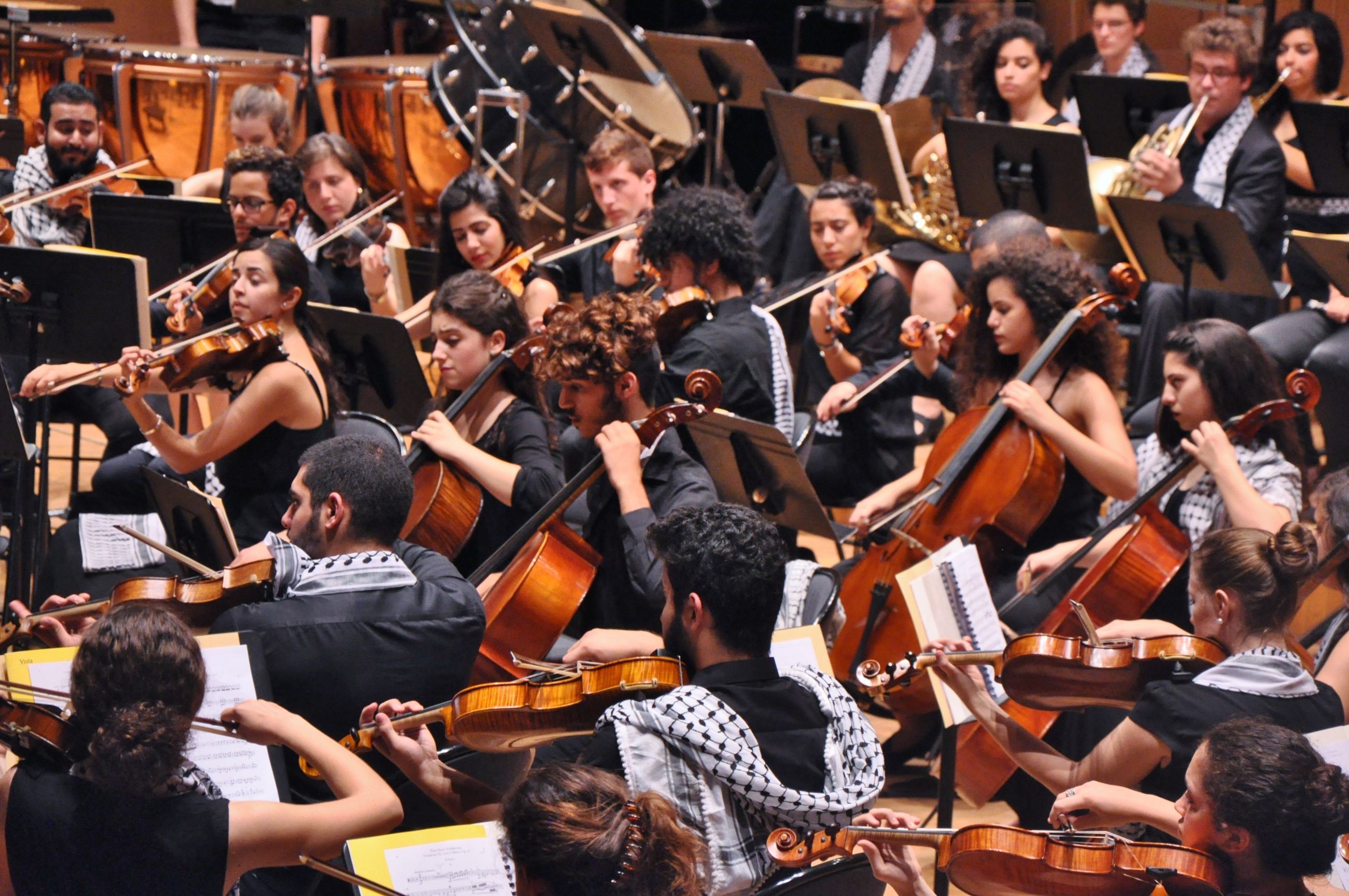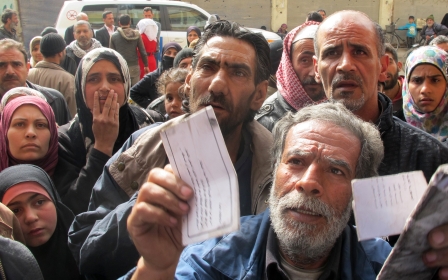Palestine Youth Orchestra: Crossing borders, giving hope for peace

For most orchestras crisscrossing the globe, the only borders they have to navigate are passport control at airport immigration.
Not so the Palestine Youth Orchestra. The majority of its 60-plus students, aged between 14 and 26, are studying at the Edward Said National Conservatory of Music (ESNCM) in Palestine.
And to leave the West Bank or Gaza, they need to negotiate security checks and checkpoints before they can even pick up an oboe or violin in another country. For their first tour of the UK, two members were refused permits to leave the Occupied Territories.
Wissam Boustany, the PYO’s artistic advisor, told Middle East Eye: “We aim to present the human and diverse face of Palestine, its youth and its talent, and to inspire hope and support for a peaceful and just future. “
The orchestra has just completed a six-city tour of the UK, which Boustany described as a “wonderful reminder to the world that Palestine is a rich and diverse culture".
Music: A bridge between people and nations
The PYO was formed in 2004 and has toured extensively, including Palestine, Germany, France, Jordan, Syria, Bahrain, Greece and Italy. While the majority of members reside in Palestine, others live in Israel, Syria, Lebanon, Egypt, Australia and the US.
The ensemble includes Michele Cantoni, an Italian violinist living in Palestine, and Lena Saleh, a lifelong supporter of ESNCM and founding member of music charity Palmusic, which seeks to use music as a bridge between people and countries.
“We aim to present the human and diverse face of Palestine, its youth and its talent, and to inspire hope and support for a peaceful and just future,” Boustany said.
'We aim to present the human and diverse face of Palestine, its youth and its talent'
“This is a very important part of this whole tour, because this allows for the exchange of ideas and cultures among the students and teachers, and widens the horizons of everyone involved.”
The choice of conductor for the UK tour was fundamental to its success. Sian Edwards has worked with many of the world’s leading orchestras including the Los Angeles Philharmonic, London Sinfonietta and the Berlin Symphony among others.
Just as importantly, explained Boustany, she had collaborated with the PYO for several years and watched many of the young musicians blossom and mature during that time.
The result has been a synergy and understanding between the individual members of the orchestra and herself.
Hardly a dry eye in the hall
The relationship between conductor and musicians was very much in evidence at the PYO’s final performance of its UK tour at London’s Royal Festival Hall.
The concert began with an epic, heightened rendition of Beethoven‘s Leonore Overture No.3 Op.72b. Then Palestinian singer Nai Barghouti was introduced onstage to sing Ruddani Ila Biladi (Take Me Back To My Country), an Om Kalthoum cover of Bi Ridhak Ya Khaliqi (With Your Blessing, O My Creator) and Fairuz’s Ahtarifu al Huzna Wal Intithar (Grief And Waiting Are My Profession).
It’s impossible to separate the themes of freedom and justice with anything related to Palestine – and the poignancy of such performances moved many to tears, with hardly a dry eye in the hall.
After the interval there was a performance of Metal in tribute to the British composer Graham Fitkin, followed by the full-length version of Pictures At An Exhibition by Modest Mussorgsky, a 10-part opus.
'The message is more than just the music because of the Palestinian plight for freedom and justice'
The grand finale was a traditional Palestinian instrumental, which drew a clap-along from the audience and a prolonged and deserved standing ovation for the orchestra.
The tour will not necessarily change the world nor bring Palestine one small step closer towards freedom. But for the musicians it’s a welcome change to their daily environment, where they can be themselves through the power of music.
During the interval, one member of the audience - who wished to remain anonymous – told Middle East Eye that she “wanted to cry because I’m so happy that the Palestinians were able to make it".
“Tonight highlights two things,” she said. “The message is more than just the music because of the Palestinian plight for freedom and justice, but also because the music is so beautiful in its own right that you can appreciate the two things together through the great talents performing tonight.”
Middle East Eye propose une couverture et une analyse indépendantes et incomparables du Moyen-Orient, de l’Afrique du Nord et d’autres régions du monde. Pour en savoir plus sur la reprise de ce contenu et les frais qui s’appliquent, veuillez remplir ce formulaire [en anglais]. Pour en savoir plus sur MEE, cliquez ici [en anglais].




